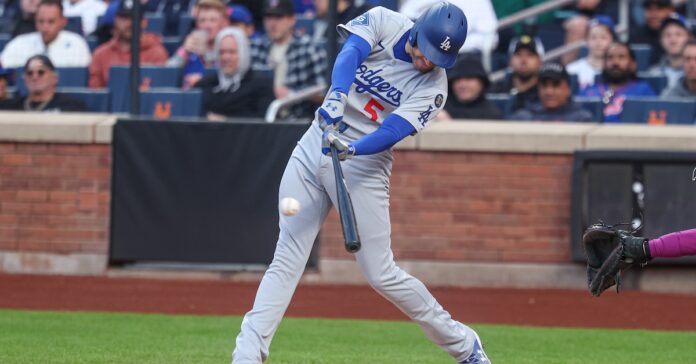
I nonetheless bear in mind the primary time I questioned, What if the colours I see aren’t the identical ones that different folks see? What if the colour I understand as pink appears to be like the identical as what you understand as yellow? I used to be 10 years previous, and I felt like a budding scientist or thinker, or maybe a poet. Whichever one, I used to be already making ready my Nobel Prize acceptance speech.
I’ve since come to comprehend that my 10-year-old mind wasn’t asking something that each stoned faculty freshman hadn’t requested earlier than. I sounded much less like a Nobel Laureate and extra like John Kruk taking his position because the Phillies’ shade commentator a bit too actually. That stated, the concept totally different human beings understand colours in several methods isn’t simply pot-fueled postulation or Krukian knowledge – it’s the reality. It might have blown my 10-year-old thoughts to be taught the colours I see aren’t essentially the colours everybody else sees, and it’s not nearly rods, cones, and intrinsically photosensitive retinal ganglion cells. Typically, it’s a matter of language.
Check out the 4 swatches beneath. Take into consideration what colours they’re. And no, the solutions aren’t Steven Kwan’s whiff charge, arm energy, bat velocity, and dash velocity:
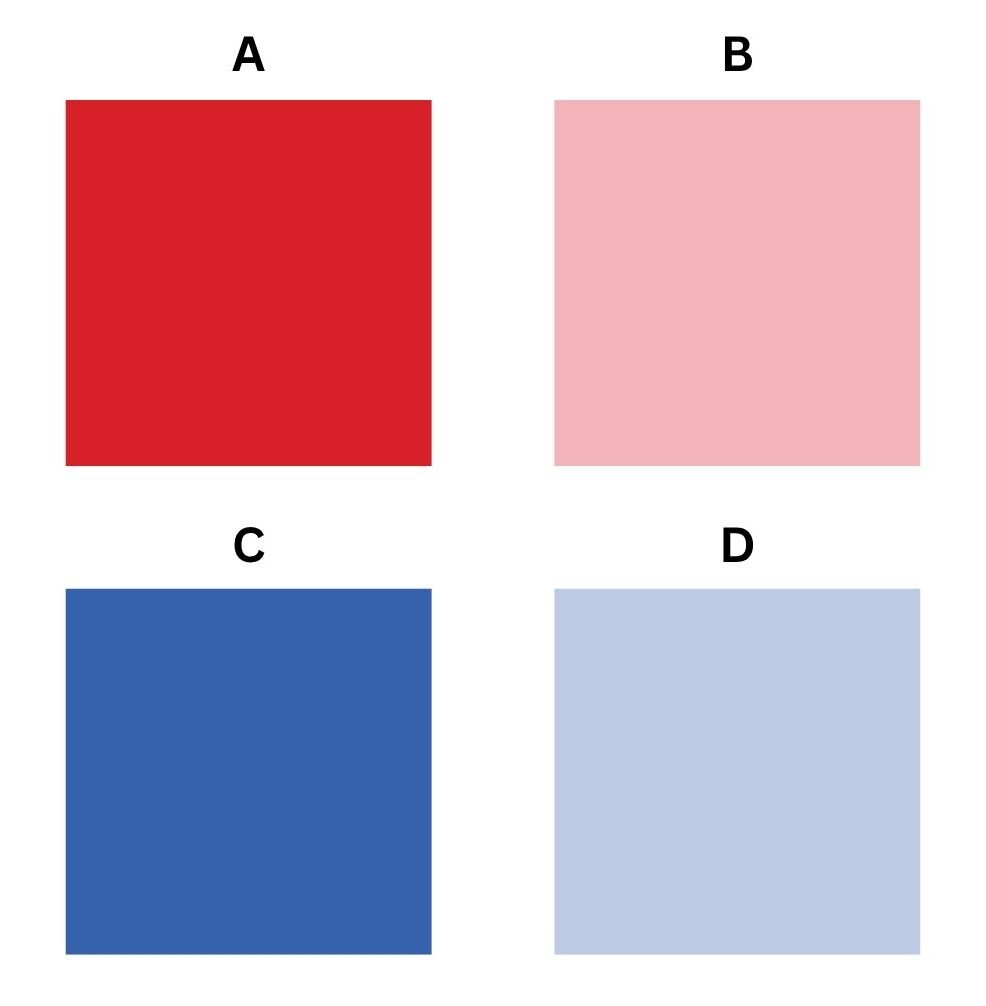
When it comes to lightness and saturation, the distinction between swatches A and B is roughly the identical because the distinction between swatches C and D. But, if I confirmed you the swatches one by one and requested you to call every shade, you’d in all probability give totally different solutions for A and B (pink and pink, respectively) and the identical reply for C and D: blue. It might be the identical if C and D had been two totally different tones of orange, yellow, inexperienced, or purple. English audio system consider “pink” and “pink” as distinct shade classes in a extra vital manner than we do for shades of another hue.
That’s not the case for all languages. In Russian, as an example, the phrases “синий” (romanized as “siniy”) and “голубой” (romanized as “goluboy”) discuss with darker and lighter blue. What is especially fascinating about that is that having two totally different phrases for darker and lighter blue has been proven to assist Russian audio system distinguish between the 2 shades extra shortly and precisely than English audio system. So, some cognitive psychologists theorize that the languages we converse don’t simply describe the fabric world. They affect the way in which we understand it.
(A short apart: When the Royals drafted Victor Cole, the latest Russian-born participant to seem within the main leagues, I’m wondering in the event that they knew that nobody else was higher suited to tell apart between the darkish and light-weight blues of their uniforms?)
As a monolingual English speaker, I can barely comprehend how somebody may see totally different shades of blue as separate colours – despite the fact that I do the identical with pink and pink. It feels as unusual as calling scorching pizza and chilly pizza two totally different meals or left socks and proper socks two totally different gadgets of clothes. But, somebody from Russia could be equally confused that I can’t simply distinguish between siniy and goluboy. It’s not about any intrinsic property of the colours. It’s all about language. Certainly, researchers have discovered comparable results in numerous areas past shade, together with the notion of every thing from objects and portions to time and area. What about line drives?
Batted balls are historically sorted into three main buckets based mostly on their vertical course and one other three based mostly on their horizontal course. Proper now, I’m within the vertical buckets: groundballs, fly balls, and line drives. Sports activities Information Options retains monitor of batted ball information, which we home right here at FanGraphs, so you will discover these numbers alongside conventional stats like singles, doubles, triples, and residential runs. With a number of fast clicks, I can inform you Jose Altuve is the energetic chief in groundballs, identical to he’s the energetic chief in singles, and Freddie Freeman is the energetic chief in line drives, identical to he’s the energetic chief in extra-base hits. I used to be extra stunned to be taught Nolan Arenado is the energetic chief in fly balls, and I feel that’s partially due to how usually he pops out. After I take away infield fly balls from the info, Andrew McCutchen jumps to the highest of the leaderboard. Therein lies the difficulty on the coronary heart of this piece: There are not any cut-and-dried guidelines for sorting batted balls. For those who checked out Baseball Savant as an alternative of our leaderboards, you wouldn’t discover Arenado or McCutchen sitting atop the fly ball rankings. Moderately, you’d see Carlos Santana (for those who included popups) and Freeman (for those who didn’t).
Not like singles, doubles, triples, and residential runs, the several types of batted balls aren’t discrete classes. As with colours, they exist on a spectrum. Take into account the swatches beneath. I took the colours instantly from three group logos on MLB.com:
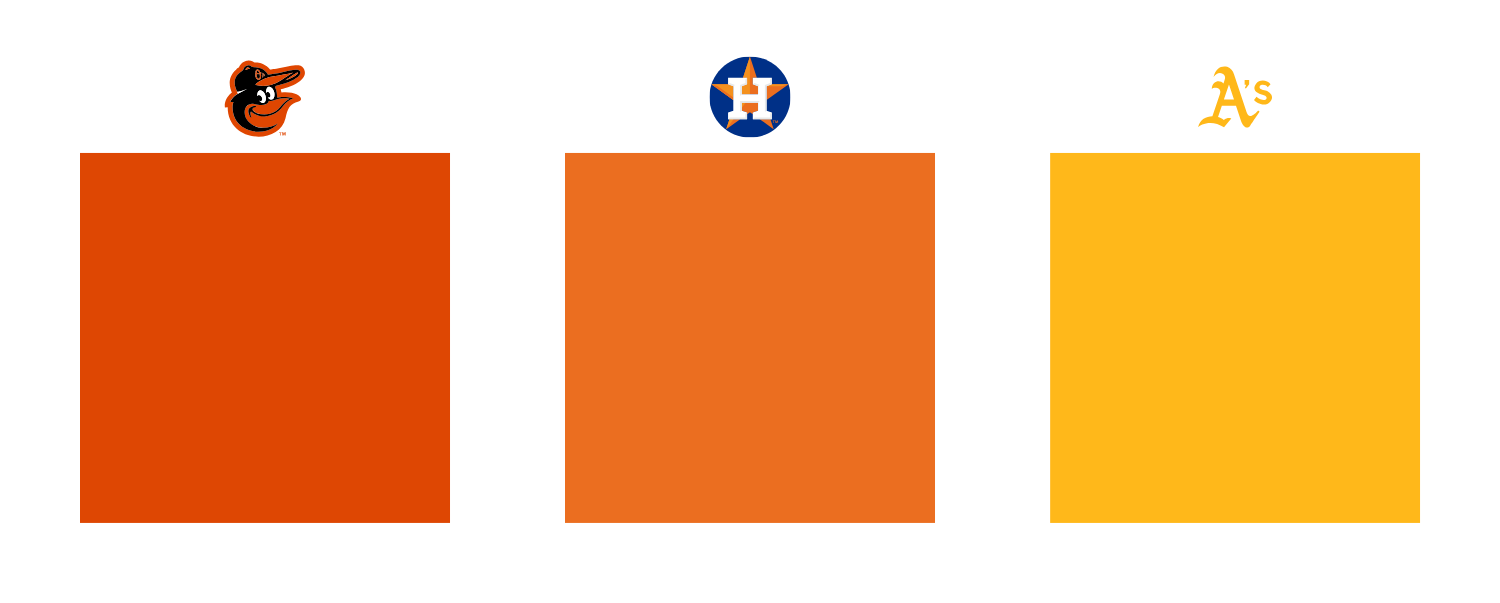
The Orioles’ and Astros’ logos are each orange. Whether or not you’d name the Athletics’ emblem yellow or gold, what issues is that it’s in a unique shade class than the opposite two – despite the fact that the distinction between Astros orange and A’s yellow actually isn’t that a lot larger than the distinction between Orioles orange and Astros orange. All three colours exist someplace alongside the spectrum from pink to orange to yellow, however two of them are “identical” and one is “totally different.”
Now, think about the three batted balls within the clips beneath:
Every got here off Trea Turner’s bat on the identical velocity (98 mph), and the distinction in launch angle between the primary hit and the second hit is identical because the distinction in launch angle between the second and the third. Nonetheless, the primary two had been groundballs, based on each SIS and Statcast, whereas the third was a line drive. All three hits exist alongside the groundball-to-line drive spectrum, however as with the colours, two of them are “identical” and one is “totally different.”
This isn’t a grand revelation. I’m hardly the primary individual to write down in regards to the blurry line between groundballs and line drives and the even blurrier border separating line drives and fly balls. What I’m questioning is that if the rationale these two are labeled as separate varieties of batted balls…
…whereas these two are each line drives…
…is identical motive why we’d say JT Chargois is sporting the identical shade in displays A and B however a unique shade in exhibit C. Is all of it about language?
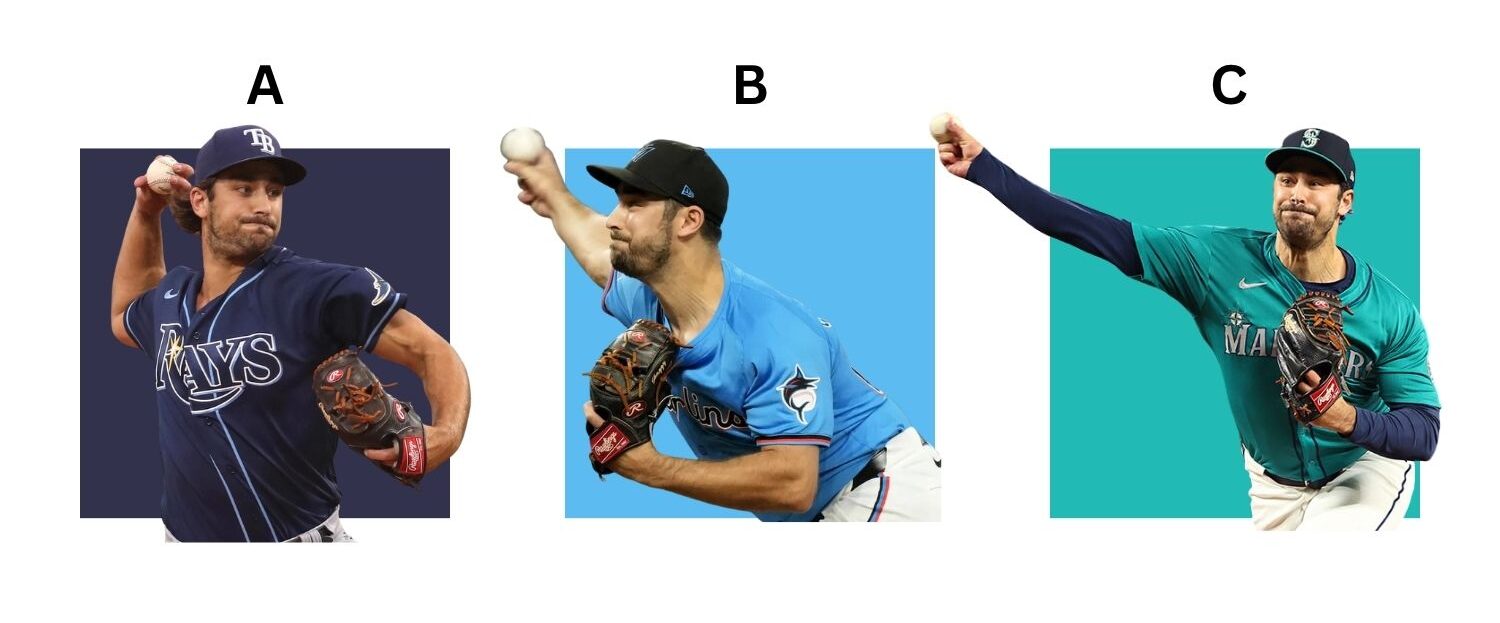
Categorical notion describes the human tendency to view variations between gadgets inside classes as a lot smaller than variations between gadgets in separate classes, even when these variations are of the identical magnitude. In different phrases, as soon as we’ve created classes, intra-category variations can appear much less essential than inter-category ones.
For instance, analysis individuals have been discovered to understand variations between varieties of 1 shade and variations between types of one other shade as a lot smaller than equal-sized variations that traverse the boundary between these two colours. This helps clarify why separating blue into two classes (siniy and goluboy) permits Russian audio system to raised distinguish between shades of blue. On the flip facet, it helps clarify why English audio system are worse at distinguishing between darker and lighter blues.
I feel we’ve the identical downside with line drives. In response to the Dickson Baseball Dictionary, the primary identified use of the time period “line drive” was in an 1876 problem of the Chicago Tribune, although it was additionally used not less than a yr earlier to explain an identical kind of batted ball in cricket. Meaning the time period predates what we all know at present as Main League Baseball, and it has been round since lengthy, lengthy earlier than we had any option to measure launch angle or exit velocity. It’s the identical for “groundball” and “fly ball” (and “popup”). Does it actually make sense that we’re nonetheless utilizing the identical main classes for batted balls which were round for nearly so long as the sport itself? I imply, perhaps. However on the very least, it’s value contemplating that we solely deal with line drives as a single, unified class as a result of that’s all we’ve the language to explain.
The colour time period “blue” implies an outlined class, distinct from inexperienced, pink, and many others., and encompasses each shade from navy to powder. In the identical manner, the time period “line drive” implies an outlined class, distinct from groundballs and fly balls, and encompasses all types of contact from low screamers to frozen-rope dwelling runs. But, I’m wondering if it wouldn’t be extra helpful to separate line drives into two classes: low line drives and excessive line drives. Utilizing the qualifiers “low” and “excessive” makes it seem to be I’m discussing subcategories, however that’s solely as a result of a scarcity of particular language forces subcategorization. You don’t must say darkish and light-weight blue when you may have siniy and goluboy.
Over the previous three seasons, main league batters have hit almost 75,000 line drives, per Statcast. The median launch angle of these 75,000 line drives is someplace round 16 to 17 levels. That’s additionally the approximate midpoint between the place line drive batting common peaks (12-13 levels) and line drive ISO peaks (21 levels). So, 16 levels looks as if the proper upward cutoff level for a “low liner,” and 17 levels looks as if the proper start line for a “excessive liner.” Utilizing these definitions, right here’s how the 2 varieties of batted ball have carried out since 2023:
Low Liners vs. Excessive Liners (Since 2023)
| Batted Ball | BA | ISO | wOBA |
|---|---|---|---|
| Low Liner | .752 | .187 | .731 |
| Excessive Liner | .514 | .325 | .563 |
SOURCE: Baseball Savant
Near 58% of low liners have was singles, in comparison with 27% of excessive liners. In the meantime, excessive liners are about 130 occasions extra more likely to be dwelling runs. Out of greater than 38,000 low liners from the previous three seasons, simply 10 have left the yard. That’s not so stunning; a batter has to utterly smoke the baseball to get it over the fence with a launch angle underneath 17 levels. Nonetheless, low liners are way more productive than excessive liners as a result of they’re a lot more durable to catch. Solely 1 / 4 of low liners flip into outs, whereas excessive liners discover a fielder’s glove nearly half the time.
Right here’s how these numbers look in comparison with the identical stats for groundballs and fly balls:
4 Forms of Batted Balls (Since 2023)
| Batted Ball | BA | ISO | wOBA |
|---|---|---|---|
| Groundballs | .248 | .024 | .228 |
| Low Liner | .752 | .187 | .731 |
| Excessive Liner | .514 | .325 | .563 |
| Fly Balls + Popups | .209 | .429 | .340 |
SOURCE: Baseball Savant
The distinction in ISO between excessive liners and low liners is sort of as large because the distinction in ISO between low liners and groundballs. Equally, the distinction in batting common between low liners and excessive liners actually isn’t that a lot smaller than the distinction in batting common between excessive liners and fly balls. So, by way of the outcomes they generate, low liners and excessive liners are roughly as totally different from each other as they’re from another kind of batted ball. There’s additionally a visible part. Low liners extra intently resemble groundballs, whereas excessive liners have extra in frequent with fly balls, and that’s not simply due to every’s proximity to the bottom. Low liners, like groundballs, usually tend to be hit to the batter’s pull facet. In the meantime, excessive liners, like fly balls, are much less more likely to be pulled than they’re to be hit straightaway or to the alternative discipline:
Spray Angle Distribution (Since 2023)
| Batted Ball | Pull Price | Straightaway Price | Reverse-Area Price |
|---|---|---|---|
| Groundball | 49.2% | 38.6% | 12.3% |
| Low Liner | 42.4% | 36.4% | 21.2% |
| Excessive Liner | 34.6% | 36.8% | 28.6% |
| Fly Balls + Popups | 27.0% | 36.7% | 36.3% |
SOURCE: Baseball Savant
You can argue that each one this proves is that batted balls exist on a spectrum, which was by no means up for debate. In any case, you would possibly assume, we may chop up any kind of batted ball into any variety of smaller teams and are available away with totally different stats for every subtype. Which may effectively be true, however by that line of considering, there’s no level in categorizing batted balls in any respect.
Nobody would disagree that the exact cutoff factors for any system of batted ball classification are arbitrary. Nonetheless, batted ball sorts are an extremely useful gizmo for describing and analyzing the sport. Meaningless cutoff factors are a obligatory evil within the creation of classes that completely do matter. So, this has by no means been a query of discovering the “right” dividing traces between several types of contact. Moderately, it’s about being open to the concept a number of phrases invented 150 years in the past aren’t the be-all and end-all of batted balls.
So why excessive and low line drives? I may present you the stats for prime and low groundballs or excessive and low fly balls, but it surely wouldn’t be as fascinating. A groundball hit too low is simply poor contact. The identical goes for a fly ball hit too excessive. High and low line drives, nevertheless, are each efficient however in several methods. Low liners are worthwhile as a result of they’re more likely than groundballs to go for singles. Excessive liners are worthwhile as a result of they’re a lot much less possible than fly balls to be caught once they don’t escape the yard.
That’s just about the crux of the matter: Low liners and excessive liners reach other ways. To that time, think about the pronounced distinction in common exit velocity and hard-hit charge between high and low liners:
Low Liners Are Exhausting Liners…
| Batted Ball | EV | Exhausting-Hit% |
|---|---|---|
| Low Liner | 97.0 mph | 65.1% |
| Excessive Liner | 90.7 mph | 42.8% |
SOURCE: Baseball Savant
It makes intuitive sense that low liners, on common, are hit more durable; in the event that they weren’t hit exhausting sufficient, they’d contact the bottom too quickly and be labeled groundballs as an alternative of line drives. The factor is, whereas low liners usually tend to be hit exhausting, they don’t should be hit as exhausting with a view to achieve success. Exhausting-hit low liners have a wOBA 15% greater than non-hard-hit low liners. Exhausting-hit excessive liners have a wOBA 38% greater than non-hard-hit excessive liners. Even so, they nonetheless aren’t as worthwhile as their hard-hit low counterparts:
…However They Don’t Have To Be
| Batted Ball | wOBA |
|---|---|
| Low Liner (Exhausting-Hit) | .766 |
| Low Liner (Not Exhausting-Hit) | .665 |
| Excessive Liner (Exhausting-Hit) | .670 |
| Excessive Liner (Not Exhausting-Hit) | .484 |
SOURCE: Baseball Savant
The opposite facet of that coin is that prime liners have way more to realize from extra exit velocity. At an exit velocity of round 105 mph, excessive liners lastly eclipse low liners in productiveness, they usually solely get extra worthwhile the more durable they’re hit. Low liners, then again, are all equally productive at any exit velocity between 90 and 104 mph, they usually solely change into marginally extra productive with every added mile per hour above 105:
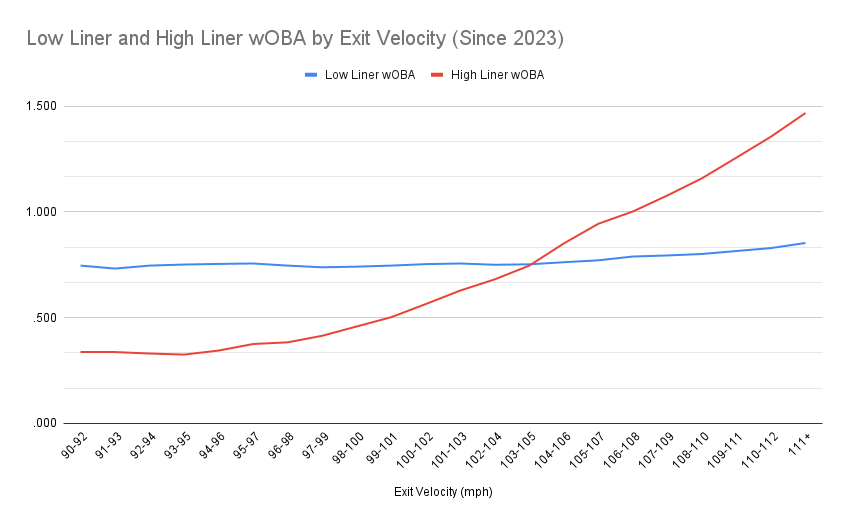
The straightforward rationalization for that is low liners and excessive liners have totally different targets. All else being equal, hitting the ball more durable is sort of at all times going to result in higher outcomes on the plate. That stated, exit velocity makes a a lot greater distinction for those who’re going for additional bases. The distinction between a double and a house run is usually just some miles per hour of exit velocity. In the case of hitting singles, nevertheless, generally it’s equally efficient to dink the ball in entrance of the outfielders as it’s to ship it over their heads.
On a associated word, the distinction between high and low line drives has grown extra pronounced in recent times. Baseball Prospectus’s Russell Carlton has written about line drives extensively, noting that they’re being caught at a better charge than previously and, maybe in response, line drive charges have declined. But, based on the Statcast information, these results haven’t been the identical for each high and low line drives.
Low line drives, that are much less vulnerable to being caught, even have a better batting common over the previous three seasons than they did within the first three years (or another three-year interval) of the Statcast period. That’s all of the extra spectacular contemplating the league-wide BABIP has declined considerably, dropping from .300 from 2015-17 to simply .293 from 2023-25. Moreover, the low line drive charge has solely declined by half as a lot because the excessive line drive charge. Because of this, batters proceed to generate nearly as a lot worth with low line drives as they did in the beginning of the Statcast period. In distinction, excessive line drives have change into a far much less plentiful supply of runs:
Low and Excessive Liners By way of the Yearse
| Low Liners | Excessive Liners | |||||
|---|---|---|---|---|---|---|
| 2015-17 | .738 | 12.7% | 109 | .552 | 12.6% | 153 |
| 2023-25 | .752 | 12.2% | 98 | .514 | 11.6% | 60 |
SOURCE: Baseball Savant
I hope all this was sufficient to persuade you that low liners and excessive liners are helpful as distinct classes for describing and understanding the sport. There’ll by no means be an ideal option to slap labels onto a spectrum. Dividing traces will at all times be fuzzy, and language will at all times restrict the labels we create. Even my proposal to separate line drives in two is biased by language; if there have been a standard English phrase for “medium peak,” maybe I’d be suggesting three new groupings as an alternative of simply excessive and low.
In the end, nevertheless, I’m not too involved with whether or not excessive and low line drives are the right classes to recommend, or if I’ve break up them up the right manner. What issues to me most is solely contemplating the chance that such extra classes exist. If language is the one factor holding us again from perceiving blue as two discrete colours, perhaps it’s additionally the one factor stopping us from seeing line drives as two several types of batted balls. Maybe it’s time to open our eyes to the siniy and goluboy of line drives.
All stats by means of June 29.
